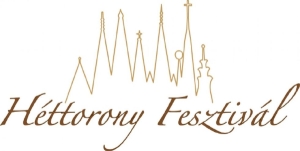Héttorony Festival
6-20 November 2013

The Héttorony Festival (Festival of the Seven Towers) is dedicated to the legacy of Imre Makovecz architect. The Hungarian Pavilion in Sevilla was opened 20 years ago – and this event provided the apropos of this years festival all around the Carpathian Basin. Concerts, exhibitions, lectures, architectural walks were held in Subotica, Makó, Csenger, Kosice, Lendava, Beregovo, Cluj-Napoca, Tiszapéterfalva, Budapest.
The Hungarian Pavilion, 92 World EXPO, Sevilla, Spain, lies along a north-south axis. Inside, two walls stretch across the building’s diagonal. Each wall is three metres apart from the other. Seven towers stand on top of this double wall. To the west of the double wall can be found all those areas that project what Western Hungary is like, while the eastern section naturally represents Eastern Hungary.
Imre Makovecz’s Hungarian pavilion, widely regarded as the most inventive structure at Expo ’92 here, soars free from the fair’s architectural cacophony like some dizzy fantasy. Built from wood carved in folk styles and bearing a gray slate roof, it seems inspired by village churches but leaps beyond any one model with an exuberance that recalls the Catalan Antonio Gaudi. Inside, the building’s conceptual basis becomes clearer, with no loss of wit and style. The interior is divided, one portion symbolizing Hungary facing the West, with a simplified Baroque church front. Pass through that facade and one finds Hungary facing East, the wall exploding with undulating Slavic-style facades (more gray slate) and carved portals. There is also a “Tree of Life” on the Western side, a jumble of roots and branches with a glass floor so that visitors can see the whole thing.


